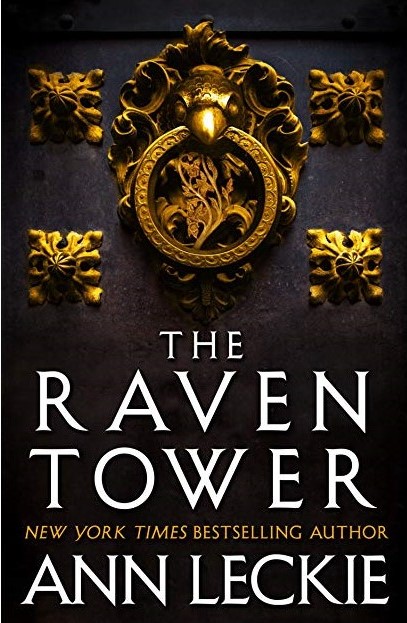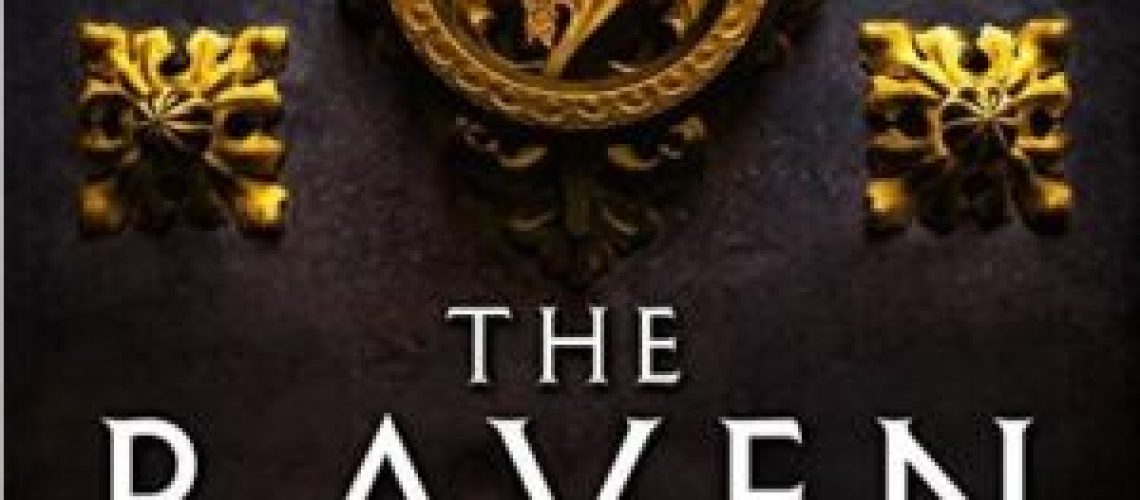Ann Leckie is best known for her space opera work in The Ancillary series, a series that uses a first person point of view, pronouns, scope, and perspective to give a fresh and literary spin on that subgenre. I’ve highly enjoyed Leckie’s work in this arena and was excited to discover that she has an interest in writing fantasy as well. In her new novel, The Raven Tower, a second person point of view and experimentation with narrative and protagonists support an interesting turn for the author into fantasy novels.
In a world very similar to our own — save that there are Gods — conflicts between city states and other polities run very much like they did in our Earth during the bronze age. Rulers strive for temporal supremacy over important resources and locations alike. Having the favor of a God or two is the “killer app” of warfare and conflict on this world, but when both sides have powerful Gods on their sides, conflicts become more subtle, more complex, and longer lasting. A key strait and a pair of cities on either side provide a venue for men and Gods to war against each other.
And the Strength and the Patience of the Hill, a humble God from the far north, watches and patiently waits, even as They (for that is the God’s preferred pronoun) are inevitably drawn into the conflict. It is the God’s story, as refracted into the human protagonist Eolo who provides much of that action that is the heart of Ann Leckie’s story in The Raven Tower.
 It should be said right off that I recognize that this novel could be off-putting to new readers of Leckie or for readers who do not like Leckie’s experimentation in the genre. The second person narration at the heart of the novel, directed toward Eolo, our protagonist, is an unusual way to tell this story, but Leckie makes what could be a “trick pony” work much in the same way as Jemisin’s The Fifth Season use of a second person perspective. With second person narratives in general, there is a foregrounding of the concern over who is telling the story, to whom, and why. In The Raven Tower, the listener is clearly Eolo, but who the speaker is — and why they are doing so — is not immediately clear. This obfuscation makes the novel a puzzle to work out, but by the end, the story behind the story becomes clear.
It should be said right off that I recognize that this novel could be off-putting to new readers of Leckie or for readers who do not like Leckie’s experimentation in the genre. The second person narration at the heart of the novel, directed toward Eolo, our protagonist, is an unusual way to tell this story, but Leckie makes what could be a “trick pony” work much in the same way as Jemisin’s The Fifth Season use of a second person perspective. With second person narratives in general, there is a foregrounding of the concern over who is telling the story, to whom, and why. In The Raven Tower, the listener is clearly Eolo, but who the speaker is — and why they are doing so — is not immediately clear. This obfuscation makes the novel a puzzle to work out, but by the end, the story behind the story becomes clear.
The second person story told here follows Eolo, an assistant to Mawat, the man who should be the next Raven’s Lease — a Year-King position where the exalted are tied to the manifestation of the Raven God. When the raven that the God inhabits dies in the natural course of a bird’s life, the Raven’s Lease is expected to commit suicide and the Heir to the position become the new Lease. But when the Raven dies and the current Lease, Mawat’s father, runs or possibly disappears instead, Mawat’s uncle, Hibal, usurps the position. Mawat is left out in the cold wondering what has happened to his father, having been frozen out of his rightful role by his uncle. In addition to political and military threats, this puts Iraden, the home of our protagonist, in a rather precarious and chaotic position. In his role as Mawat’s aide, Eolo has a key role in the events that unfold. Mawat himself is extremely conflicted about what and how to deal with his usurping uncle, a space that allows Eolo freedom — and duty — to act.
Eolo himself is something only becoming more seen in fantasy fiction nowadays — a transgender man. Eolo’s gender identity is brought up quickly and easily, and the nature of the world that Leckie created means that Eolo’s gender identity is treated as a simple and direct fact of the character, not the central pole and concern of his existence. Transgender people, and people with non-binary pronouns (such as the aforementioned God of Strength and Patience of the Hill) are natural and integrated members of the society that Leckie has built, and while Eolo’s trangender nature is remarked upon at a couple of points by other characters, Leckie’s world is a far less prejudicial world than ours toward such individuals. Of course, it will be interesting to see how trans people respond to the Leckie’s approach, as my perspective is that of a cishet man.
Readers of literature might wonder if Eolo, Mawat, and Hibal’s story is evocative of Hamlet. Indeed, it is. Leckie has taken a classic story from the Bard and cast it in a fantasy light. In addition, using the perspective as she does gives the story a fresh perspective on a classic chassis with potent archetypes that Leckie mixes and matches to great effect. There are even a Rosencrantz and Guildenstern in the form of a pair of rather unpleasant twins. This second person Shakespearean narrative also gets paired with a third person narrative focused on backstory and godly worldbuilding — specifically, the God named Strength and Patience of the Hill. We follow their journey from a God existing when ammonites were new and fresh on the scene all the way to the arrival of man to his lonely northern home. There is a slow and stately approach toward the events that the second person narrative documents. Even if the God just wants to stand where he always has stood, the aforementioned conflict touches him and his people. Just how these two timelines resonate with each other takes time to play out, but when the things become clear, the scaffolding of Leckie’s narrative makes it clear how the narratives interact and twist together.
The theological worldbuilding was a big highlight for me, and it shows Leckie’s inventiveness. It is rather common to have magical/theological systems where Gods get power and strength from the prayers and devotion they receive from their followers. Leckie does not go for that approach here. Instead, the effects that Gods can command are arrayed against reality, and to try and change reality too much or too severely can lead to depletion of the God’s power or even their existence entirely. It reminds me a bit of Mages in the old World of Darkness roleplaying game, who have the potential to change reality, but to change it too severely has potentially fatal consequences.
Overall, I think The Raven Tower is a very clever book. The novel really works well in terms of its cleverness and invention and perhaps a little less so in deeply connecting with the characters. Eolo is a really intriguing figure, a transgender man who is caught between the ditherer he serves and some rather manipulative and dangerous foes on the other end, but we don’t see anything from the inside of his perspective, which is more than a bit distancing. The Raven Tower, then, is not a fantasy novel for readers who want a deep dive into character and character growth.
I personally enjoyed how aspects of what is going on do unwrap as a puzzle to be revealed. That puzzle aspect of the novel, as well as the worldbuilding, served as the hook to keep me turning the pages and to drive me forward into the narrative. Discovering just what the Gods are up to and the true state of affairs that Eolo has been thrust into is a delight for me as a reader to eventually discover. Readers who want that sort of experience in their reading will really appreciate what Leckie does here in the novel. The Raven’s Tower, as such, works superbly in it’s intriguing exploration of its plot, story and worldbuilding.







